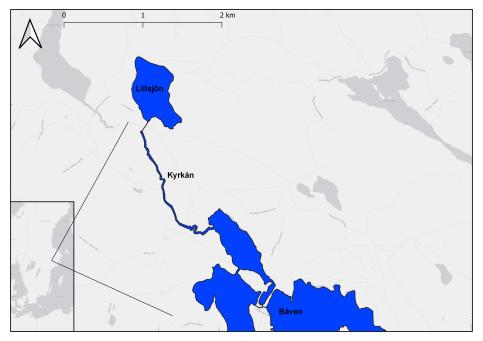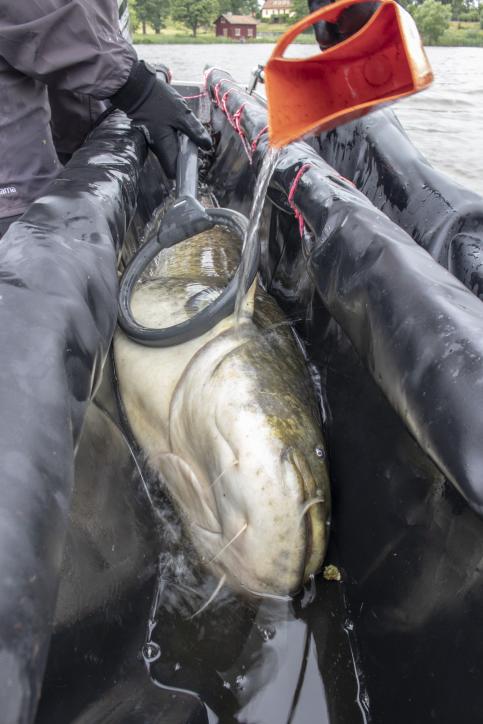Methods
Study site

The population of focus is situated in Lillsjön (59°6'17.7"N 16°48'24.0"E), a lake adjacent to Lake Båven in Sörmland county, south of Stockholm. The population has not been studied previously, thus the population size is currently unknown. Lillsjön is connected to the much larger lake Båven by a 2 km long stream called “Kyrkån”. The stream is however blocked, completely limiting large individuals from traveling between the lakes, while juveniles can use the stream during periods of high-water flow. All tracked fish were adults and thus too large to use the stream, ensuring that no fish ventured out of the detection range of the acoustic telemetry system, making Lillsjön an ideal study area.
Fish tagging & telemetry

Ten adult wels catfish were caught by angling in lake Lillsjön and were equipped with acoustic transmitters that were surgically implanted in the body cavity of the fish. During the procedure, fish were placed in a plastic half pipe construction with its ventral side facing upwards, with water flowing over the gills to keep them oxygenated. The procedure was carried out in accordance with Swedish ethical requirements regarding capture and tagging of fish (SLU, dnr 5.8.18-17028).
I used a grid of 10, 69 kHz acoustic receivers to track the fish. The position of a fish was estimated each time a unique transmitter sent out a coded signal that was picked up by three or more receivers in the grid. The exact position of each fish (average interval of 6-7 minutes) was calculated based on the time difference of the signals arrival between the receivers.
All individuals were still active after the study period, confirming that there was no tag failure, tag expulsion or post‐tagging mortality.
Responsible for this page:
Director of undergraduate studies Biology
Last updated:
05/13/21
